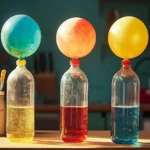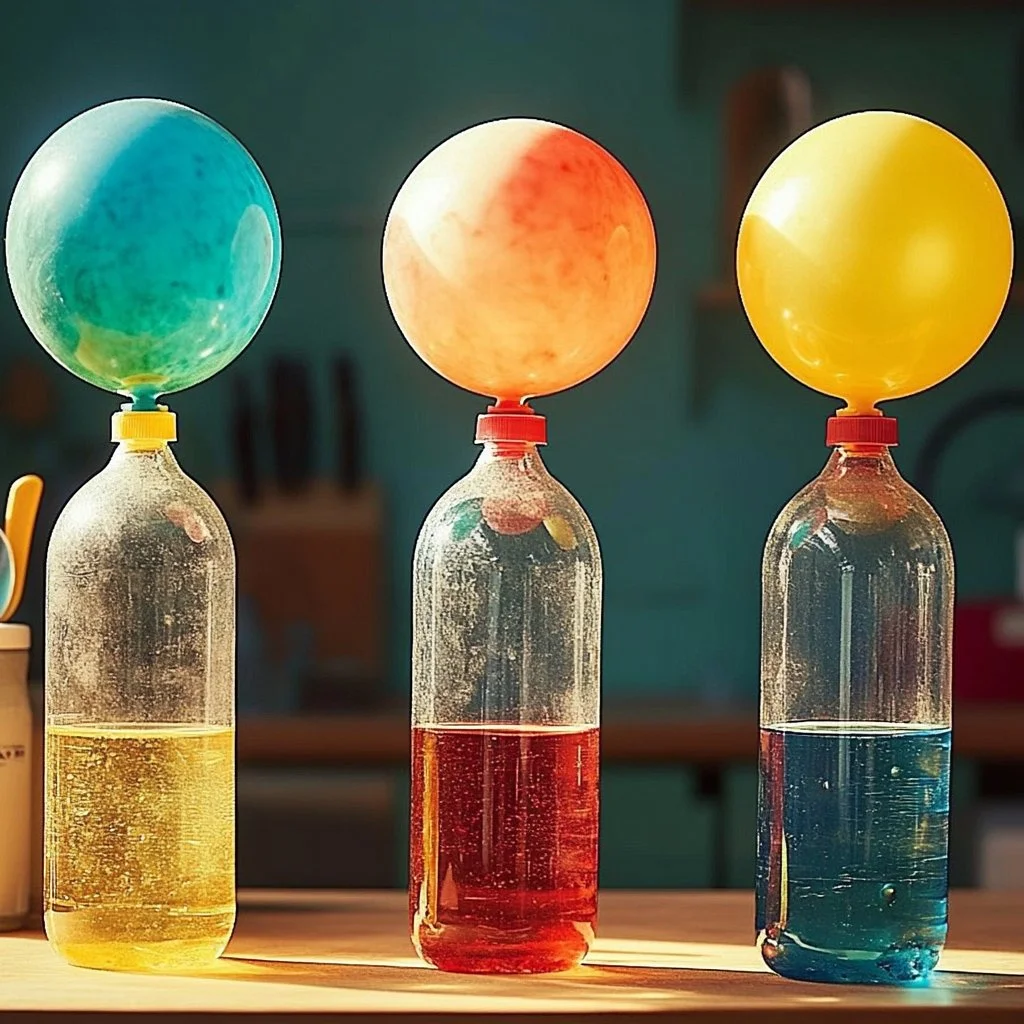Baking soda and vinegar experiments are a classic in the world of fun science projects, and for good reason! This captivating activity is not only an exciting way to demonstrate chemical reactions but also a fantastic opportunity to engage children in learning through hands-on experiences. The combination of baking soda and vinegar produces a delightful eruption of gas that fills a balloon, creating a visually stunning effect and instant gratification. Whether you’re a parent looking for an entertaining afternoon activity, a teacher seeking engaging classroom experiments, or a curious individual wanting to explore chemistry, this balloon experiment is bound to captivate and educate.
Why You’ll Love This Baking Soda and Vinegar Balloon Experiment:
- Engaging Learning: Kids can learn about chemical reactions in a fun way.
- Visual Excitement: Witnessing the balloon inflate is mesmerizing.
- Simple Materials: You likely already have the supplies at home!
- Safe and Non-Toxic: Both baking soda and vinegar are safe to handle.
- Encourages Creativity: Customize balloons with colors and designs.
- Easy Cleanup: The materials are easy to clean up afterward.
Materials:
- Baking Soda (2 tablespoons)
- Vinegar (1/2 cup)
- Balloon (1 medium-sized)
- Funnel (optional, for easier pouring)
- Plastic bottle (empty, 16 oz recommended)
- Food coloring (optional, for a fun twist)
Full Step-by-Step:
1. Prepare the Balloon
- Add Baking Soda: Using the funnel, carefully pour 2 tablespoons of baking soda into the balloon.
- Tip: Shake gently to ensure the powder settles at the bottom.
2. Prepare the Bottle
- Add Vinegar: Pour 1/2 cup of vinegar into the plastic bottle.
- Optional: Add a few drops of food coloring for a fun visual effect.
3. Combine Ingredients
- Attach the Balloon: Stretch the opening of the balloon over the bottle’s neck without letting the baking soda fall in just yet.
- Key Moment: Ensure a tight seal to prevent any spills.
4. Start the Reaction
- Lift the Balloon: Gently lift the balloon to let the baking soda fall into the vinegar.
- Watch the Action: Observe as bubbles form and the balloon inflates with the fizzing reaction.
5. Enjoy the Result
- Burst of Gas: The carbon dioxide produced will fill the balloon, creating a magical effect.
- Safety Note: Ensure everyone is at a safe distance from the bottle when performing!
Tips & Variations:
- Balloon Sizes: Try using different sizes of balloons for varying results.
- Scent Options: Add essential oils to the vinegar for a fragrant twist.
- Color Fun: Experiment with colored balloons and food coloring for a vibrant display.
Frequently Asked Questions:
Q1: Can I use a different container instead of a plastic bottle?
A: Yes, any container with a small opening will work, but ensure it’s stable.
Q2: What if my balloon doesn’t inflate?
A: Double-check the seal between the bottle and balloon; it should be tight.
Q3: Can I store the mixture for later?
A: No, the reaction happens almost immediately once the ingredients are mixed.
Q4: How can I clean up afterward?
A: Simply wash the bottle and balloon with warm soapy water; the materials are safe for disposal.
Suggestions:
- Experiment with Ratios: Try different amounts of baking soda and vinegar for varied inflation.
- Create a Balloon Race: Set up multiple bottles and see which balloon inflates the fastest!
Final Thoughts
This baking soda and vinegar balloon experiment is an excellent gateway into the world of science for kids and adults alike. Not only does it teach a valuable lesson in chemistry, but it also provides instant visual feedback and fun. We’d love to hear how your experiment goes! Please share your versions, tips, or outcomes in the comments below!
Print
Baking Soda and Vinegar Balloon Experiment
- Total Time: 5 minutes
- Yield: 1 experiment 1x
- Diet: N/A
Description
An exciting science experiment that demonstrates chemical reactions using baking soda and vinegar, resulting in a balloon inflation effect.
Ingredients
- 2 tablespoons Baking Soda
- 1/2 cup Vinegar
- 1 medium-sized Balloon
- Funnel (optional)
- 1 empty Plastic bottle (16 oz recommended)
- Food coloring (optional)
Instructions
- Prepare the Balloon: Pour 2 tablespoons of baking soda into the balloon using a funnel.
- Prepare the Bottle: Pour 1/2 cup of vinegar into the plastic bottle and optionally add food coloring.
- Combine Ingredients: Stretch the balloon over the bottle’s neck without letting the baking soda fall in.
- Start the Reaction: Gently lift the balloon to let the baking soda fall into the vinegar and watch it inflate.
- Enjoy the Result: Observe how the carbon dioxide fills the balloon, creating a magical effect.
Notes
Experiment with different sizes of balloons and add essential oils for a scented twist. The materials are safe and easy to clean up.
- Prep Time: 5 minutes
- Cook Time: 0 minutes
- Category: Science Experiment
- Method: Demonstration
- Cuisine: N/A
Nutrition
- Serving Size: 1 experiment
- Calories: 0
- Sugar: 0g
- Sodium: 0mg
- Fat: 0g
- Saturated Fat: 0g
- Unsaturated Fat: 0g
- Trans Fat: 0g
- Carbohydrates: 0g
- Fiber: 0g
- Protein: 0g
- Cholesterol: 0mg

